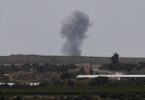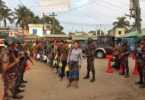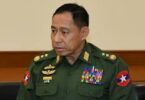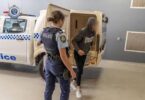WASHINGTON DC (NPR): The Jan. 6 insurrection exposed major Capitol security failures, and a review by a task force led by retired Lt. Gen. Russel Honoré is urging Congress to revamp its security apparatus by adding hundreds of new police officers, creating a quick reaction force and installing a new fencing system.
Honoré and other members of the task force will host three bipartisan briefing sessions for lawmakers on Monday at the Capitol to discuss their findings and draft recommendations.
The six-week review, which ran through Friday, also highlighted the vast shortfalls that faced Capitol Police during the siege. Officers were understaffed and under-resourced, left without earpieces or riot gear in many cases as they fought the Capitol attackers, the report said. The report also highlighted that the force is not equipped to track intelligence at the scale of attack seen on Jan. 6, the report said.
“The USCP is not postured to track, assess, plan against, or respond to this plethora of threats due to significant capacity shortfalls, inadequate training, immature processes, and an operating culture that is not intelligence-driven,” the report said.
House Speaker Nancy Pelosi, D-Calif., directed the review on Jan. 22 and tapped Honoré, citing his expertise responding to Hurricane Katrina in 2005 and knowledge of the Washington D.C. region. She directed him to “subject this whole complex to scrutiny.”
The task force said it met with federal, state and local law enforcement officials, including military officials, and congressional members and staff.
The 13-page report recommended that the Capitol Police should hire 854 more officers — adding to their current total of more than 2,000 law enforcement personnel.
Other recommendations include:
The creation of a “quick response force,” a rapid response force that co-uld be mobilized quickly to the Cap-itol for emergencies. The team would be created from area law enforcement agencies or members of the National Guard. The replacement of the current fencing system be replaced with the installation of a mobile and retractable fence instead. It also recommends that the Capitol’s system of cameras, sensors and alarms should be integrated. The expansion of the Capitol Police’s Civil Defense Unit, a specially trained team that monitors and responds to illegal activities during First Amendment assemblies and other mass demonstrations, be moved from availability only during special events to become a dedicated unit on duty any time Congress is in session.
The need for additional equipment and support, such as earpieces and body cameras for all officers. It also recommends expanded K9 teams and reinstituting mounted patrol teams that were dismantled in 2005. The creation of a new federal agency similar to the Department of Homeland Security to coordinate law enforcement in the larger Washington D.C. area, including federal agencies such as Capitol Police, U.S. Park Police and U.S. Secret Service plus state and local law enforcement departments. The need to empower the U.S. Capitol Police Chief with sole authority to call in military backup, rather than have to await approval from the Capitol Police Board which caused delays on Jan. 6. In addition, the chief should have the ability to appeal rejections for backup during advanced planning to House and Senate leadership.
The need to give the D.C. National Guard Commander new powers to or-der emergency backup to the Capitol without seeking additional approval, which delayed their response by several hours during the attack. The modification of the Capitol Police’s member protection detail team, known as its Dignitary Protection Division. It recommends the creation of a new office to consolidate lawmaker travel and bring all member district offices and homes under the same, comprehensive security plan. The plan to expand member protection comes after acting Capitol Police Chief Pittman told lawmakers in a hearing last week that in the first two moths of 2021 saw a 94% inc-rease in threats to members compared to the same period a year ago. Also, Pittman said from 2017 to 2020, there has been a 119% increase in overall threats, with the majority of suspects from outside the Washington, D.C. area.






